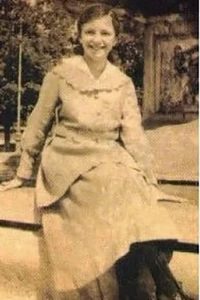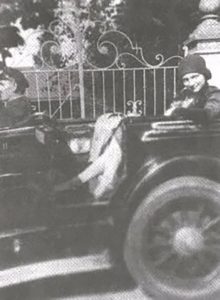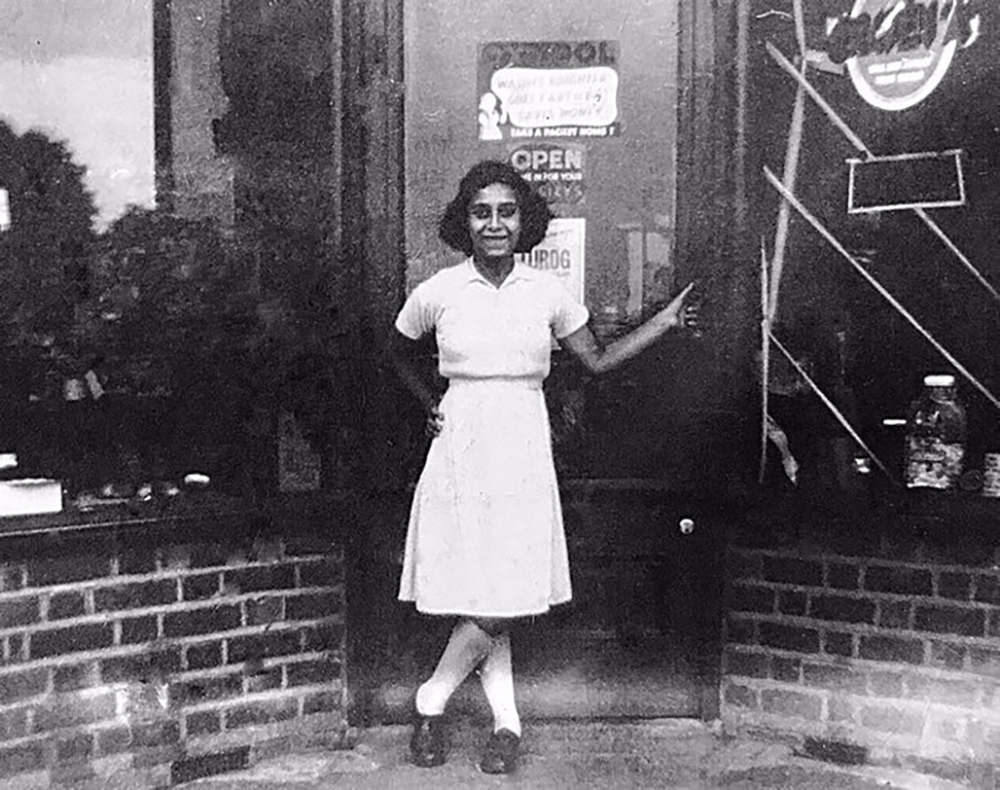By: Ann Goldberg
The crowd of teenage girls attending the funeral on the Jerusalem hillside in May 1998 never knew the special woman who died on Lag Ba’Omer. But they had all been told that it was thanks to her that they could all attend the schools they studied in every day.
Dr. Judith Grunfeld had been one of the pioneers of girls’ Jewish education.
Born Judith Rosenbaum in Budapest in 1902, she joined the legendary Sarah Schenirer in Krakow, Poland, after completing her university studies. Schenirer had started the first-ever Jewish school to teach girls Jewish studies.

Until then, the entire Jewish education of girls was culled from their mothers. While this traditional method of passing on our heritage had served the Jewish people well for centuries, Schenirer knew this was no longer enough and set out to establish high-caliber schools with in-depth learning.
For five years, Rosenbaum taught young girls and prepared them to be teachers to continue the chain of Jewish education into the future.
In 1933, she married Dr. Isidor Grunfeld. They moved to London, where she joined the Jewish day-school movement and quickly became the head of the girls’ Jewish secondary school, beginning the chain of Bais Yaakov schools in England.
But war was on the horizon. And even though Jews in England didn’t realize the extent of the atrocities being wrought on the Jews in Europe, the United Kingdom had accepted 10,000 children between the ages of 1 and 15, who had arrived on the Kindertransport (children’s transport) from Nazi Germany. Quite a number of those children (including my mother) had been sent at their parents’ request to Orthodox homes, and thus found their way to the school headed by Dr. Judith Grunfeld.
The British government had decided that if it entered the war, it would evacuate children from London (which was bound to be the target of enemy bombs) to the safety of the English countryside.
Grunfeld knew how traumatic it would be for these children, who had recently been torn away from their parents. Many would never see them again, although at that time, the kids all still harbored hopes that their parents would arrive at any minute. Now she would have to take them away from their foster families and settle them in yet another strange house.
The code word for the evacuation, which Grunfeld hoped she would never hear, was “Pied Piper tomorrow,” which would mean that all schools had to prepare the children for evacuation the following day.
The code word was broadcast on the radio on Thursday, Aug. 31, 1939. The following day, Grunfeld boarded one of the eight buses filled by the pupils of her school. Only when they were all on board did the officer in charge tell her she was headed to Shefford. This was the first indication she had of where she and 400 Jewish children would be spending their lives until the end of the war.
Shefford is a small village in Bedfordshire with 5,000 inhabitants—none of whom had ever seen a Jewish person before. All over the British countryside, the villagers had been told by the government that they would be hosting young schoolchildren as their contribution to the war effort. They turned out to meet them on the village green, each family choosing “their” children as though at some cattle market, as the sad, bewildered Jewish students stood and waited to be chosen.
There was a billeting officer in charge of alloting homes for any children who weren’t picked, and off they all went. And that was the start of the bizarre relationship between “the chosen people” and their new non-Jewish foster parents.
A warm, filling meal awaited these youngsters in their new homes as their families were sure they would be tired and hungry. But, of course, the children politely but firmly refused to eat anything since they knew it wasn’t kosher.
This was not a good start to their new relationship, as Grunfeld writes in her memoir, simply entitled “Shefford.”
To complicate matters further, this was a Friday afternoon—a few hours before Shabbat. Grunfeld realized she had a lot of work to do to avoid hunger and homesickness from the children, and outrage and bewilderment from the families who couldn’t understand the kids’ unusual behavior.

As if on cue, a car drove up with Rabbi Dr. Solomon Schonfeld, the principal of the school, who had brought with him some food so the children could have a kosher, if impromptu and sparse, Shabbat meal. He off-loaded his goods, had a short chat to introduce himself to the local clergy of Shefford, and then sped off to get home to London before the start of Shabbat.
With her charming, diplomatic personality, Grunfeld managed to arrange the use of a local hall for Shabbat services and as a temporary dining room. She then dispatched several of her teachers to go around to each foster family and give them a brief overview of Jewish dietary laws and Shabbat restrictions. Most of the families accepted this with confusion but good grace. They realized that being given the honor of hosting “the chosen people” was going to complicate their lives.
Only half of the 400-plus students were able to be accommodated in Shefford; many others were in neighboring villages where teachers were facing similar problems. Over the years (until she acquired a small car), Grunfeld could be seen cycling along the country lanes tending her scattered flock and smoothing out differences with the foster families.
Not all the families were happy with their kids, who apart from wearing funny T-shirts with strings (tzitzit) and going to sleep with the light on every Friday night (so they wouldn’t violate the Sabbath), didn’t even speak English. But on the whole, the families gradually came to appreciate their Jewish charges, and many would be sure to check that the children were keeping all their special laws and would automatically turn off their bedroom lights on Friday night if they were inadvertently left on.
On that life-changing Friday afternoon in 1939, no one had any idea that Shefford would be their home for six long years, during which time Grunfeld would become a surrogate mother to all and would see some of them through the shattering news of their parents’ fate in Europe or the blitz on London. She would help them cope with teenage moods and development, sibling fights and friendly falling-out. She was loved by all her pupils, to whom she managed to give personal, private quality time whenever it was needed.
My mother recalls her many private conversations with the “queen”—as she was known by everyone—and she always felt that she was loved and cared for. When my mother had to be hospitalized in London for a small operation on her foot, Grunfeld found the time to visit her. On my mother’s return to Shefford, she found chocolate and gifts on her pillow from Grunfeld with a “welcome home” note.
But Rebbetzin Grunfeld wasn’t just a head teacher and chief coordinator of the evacuation of her school, she was also the wife of a rabbi on the London Beth Din (rabbinic religious court) and young mother to three small children (she gave birth to their fourth child while in Shefford). When her school was settled enough to give her some respite, she set about finding a home to rent for her family so that her husband could join them and commute every day to his work in London.
All this time, Grunfeld was providing a full Jewish and secular educational framework for so many children. Her school-in-exile was highly praised by the visiting Ministry of Education inspectors. After his visit, the inspector told Grunfeld, “This is a splendid school …. You are doing the most extraordinary work under the most adverse circumstances.” His report, Grunfeld was sure, was what led to future recognition and funding of the Jewish day-school movement in the United Kingdom.
After the war, Grunfeld returned to London to continue to lead the school, but her husband’s heart attack nine years later in 1954 necessitated her early retirement and she spent the next 20 years caring for him.
Ann Goldberg and her family made aliyah from the UK over 35 years ago and they live in Jerusalem. She is a writing coach and gives essay writing workshops by email and on Zoom. She recently published her memoir PATIENT – Taking Tefillah, Emunah and Humor on a Journey to Healing. For more information, visit her website.





